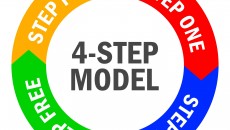‘Action Learning’ for Leadership Development – Is this still a viable learning option?
“There is no learning without action and no action without learning”
(Reg Revins 1998).
L = P + Q
Learning = Programmed (knowledge) + Questions (insight).
Many may have heard of ‘Action Learning’ being talked about within the training fraternity, but how many trainers really know what it is or consider it beneficial as a methodology for training leadership and supporting organization advancement?
The concept of ‘Action Learning’ would possibly find its root from experiential learning or learning from ‘what went well’ and ‘what didn’t go so well’, which, as an individual, the experience can become a lonely journey and steep learning curve. The foci of ‘Action Learning’ is established on a forum or group of people who may be committed to similar objectives but not necessarily have the same level of professional experience and development.
The ideal group, or to formalise a title, ‘Action Learning Set’, would consist of members from varying skill levels and occupational experience.
The strength of ‘Action Learning’ is developed through group initiatives built on the foundation of an organization’s needs. It relays on a ‘top to bottom’ engagement of sharing ideas and experiences based on group openness.
This methodology is to identify problems, solve them as a group, implement new initiatives and develop future opportunities.
The fundamentals are:
• Identifying a problem or opportunity.
• Establishing the team focus.
• Enthusiastic, inquisitive and willing to reflect.
• Commitment to learn.
• Prepared to take real-time action on a problem or opportunity.
The emphasis is exposure to a group experience through feedback, consideration and looking forward. This can be done after the ‘fact’ through reflection or in preparation for future objects.
The team, known as a ‘Set’ consist of four-six participants, who will all receive equal time to air their views.
The general sequence for a ‘Set’ is:
• Presenter talks about a professional problem or opportunity.
• Supporters (remainder of the group) ask open questions to identify and clarify a root cause, so solutions may be considered.
• Presenter develops action points based on feedback and ideas.
• Review: whole group comment on what they have learned from the session and agree time and setting for next ‘Set’.
A facilitator can also be employed to ensure time is adhered to and agreed rules are maintained.
The facilitator can also guide the ‘Set’ through a learning experience by prompting activity. The whole process should be considered on:
• Describing the issue with clarity.
• Not holding back.
• Listening intently.
• Ask questions first, before offering solutions.
• Have attitudes to the problem or opportunity changed?
• What did everyone learn?
So, what are the real benefits on the ‘Action Learning’ methodology?
Consider the strength of a group of people who have differing levels of leadership experience, presenting real questions to real problems, so a collective solution can be found.
The opportunity to present and receive feedback and feed-forward in total confidentially will allow a professional to explore new concepts and ideas with confidence. If the solution does not reach fruition, then that learning experience can be re-aired, hence continuing the group learning experience.
One criticism is subordinates often do not feel comfortable in presenting perceived issues to their team leaders or managers. However, this can be overcome with time, displays of confidentially and a sense of commitment by the senior members of the group.
This is a perpetual journey of developing leadership capability. It is the professional consciousness to continued regeneration of the learning experience and personal discovery from the reflection of others.
The organizational benefits lay in the constant strive for collective excellence by ‘top to bottom’ participation, recording personal reflection, capturing initiatives, receptive and responsive attitudes to change thus avoiding an organization that becomes stagnated with no strategic vision or people investment. ‘Action Learning’ may not be for everyone but you will not know until you give it a go; it really is ‘learning in action’.
Acknowledgments: Reginal Revins





